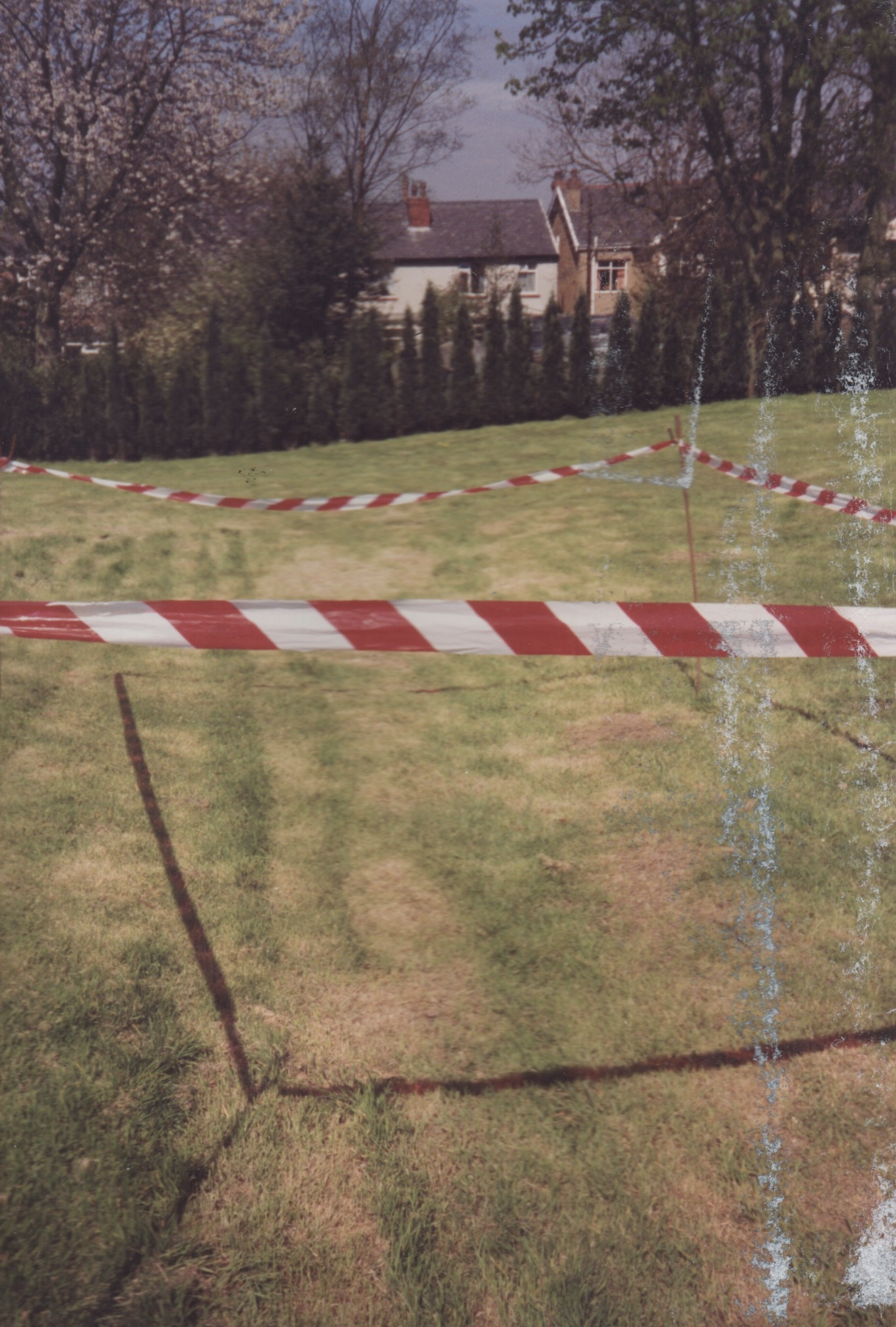I Was a Teenage Walking Artist – my visit to Walk On at Mac.
In October 1990 I’d just left home was studying sculpture at Wolverhampton Polytechnic. My first works were walking art pieces – although it would be years later that I’d discover the term and recognise where I fitted in. To establish myself in my new environment, I’d go for long walks in remote areas off the tow path, never quite sure whether I was rambling or trespassing. I encountered sculpture parks of twisted, rusting post-industrial residue that I found more deeply affecting than the minibus trips to Yorkshire I’d been on during my foundation course. It reminded me of a film I’d seen on Channel 4 a year or two previously: Andrei Tarkovsky’s Stalker (ask any walking artist what their favourite film is)
I’d rearrange things in situ, then vex my tutors by announcing that my work for the term was located beside a series of disused M&B pubs six miles away. I was encouraged to instead photograph my sculptures or recreate them the studio. To my regret, I took their advice and it would be ten years or more before my efforts to guide people through these zones would naturally resurface. I’d quickly discovered the gulf between being in a location and creating a representation of that experience for an audience who probably wouldn’t ever see it. When I graduated, I didn’t become a sculptor but I did eventually become a tour guide. There is now no gulf of experience: I am sharing my understanding of the place by taking the audience there and we then talk about it. No need to report back to anyone – though I occasionally blog about it.
Good sculpture but terrible photography (and storage)
Great to see Walking Art in Birmingham on the ascendant! The Walk On exhibition at mac pleasingly spills into every part of the venue allowing many chance encounters (it also seems to move about between visits). For what seems like a unifying medium, the walking artists communicate in radically different ways and focus on different aspects of the event. Some visually represent the route as their art while others report back what they encountered. Others are naturally drawn to map making or the landscape itself and tap into a long established path of walking art.
Hamish Fulton is undiluted walking-as-art. What you find in the gallery is emphatically not the art itself but rather a no-nonsense report of key data from the event. Thus a map of Europe is criss-crossed with epic journeys which merely state the year each walk was undertaken. For him to reproduce the walk requires you to undertake the walk, whether that’s shuffling across a concrete dais in Eastside or ascending Everest. It’s an important foundation for any understanding of the practice: none of us experience the world in quite the same way. Fulton is committed to his cause but I sometimes feel I’d like to know what notes he made on those journeys.
Plan B take a similar approach, beautifully etching digital GPS information of their Berlin walks into perspex that say nothing about the experience or terrain. But within the mechanically etched filigree lines lies a human narrative – regular routes, familiar territory with the occasional foray into the unknown.
Sarah Cullen beautiful drawings do are perhaps plan B’s analogue equivalent. There is no mystery about her process: every aspect of the process is on show. A pencil hangs in a wooden box (intriguingly cut down from what looks like a woodcut print block) which is carried over varied terrains and marks the paper accordingly. We don’t know the geography or the route – we don’t need to. Yet the journeys are there to behold – exposing the fragile rhythmic evidence of a body moving through the landscape.
Simon Pope’s approach is perhaps the most ephemeral and fragile of all the works: a recording of a dialogue between two strangers who shared a journey into unfamilar territory to determine a common ground. Straightforward, yet art like this cuts right to the heart of the human walking experience.
Jeremy Ward takes the interface between bronze age hill figure art and walking art head on. The landscape at White Horse Hill in translated digitally into GPS contours and then again into a laboriously constructed card equivalent. The horse is nearly lost amongst it all. How to respond to something as affecting as being at the Uffington White Horse, connecting with the earliest landscape artists – and maybe earliest walking artists? Ward concludes that we’ll never know why the figure was created, being viewable only from above. Having visited this location recently, and having seen the horse from ground level from several miles away, I can’t draw the same conclusion. Intriguingly, it does disappear from view as you get close to it and only reappers once you are on top of it. I’d love to believe this was intentional.
Rachael Clewlow has a similarly methodical approach, recording in tiny, hand rendered lettering all the things she walks past, and at what time, whether that’s Homebase, a Londis or a roundabout. There are no notes in her notebook, it could easily have been taken from a trade directory. There’s the sense that there’s a code to be cracked to determine what her greater pattern was. Short of retracing her steps, we’ll never know – perhaps that’s the point: the gulf is too wide to ever report the experience accurately.
Perhaps because of my tour-guide background, my favourite works tend to be those by artists who share their en route discoveries and are less concerned with what shape the whole thing made. Walkwalkwalk’s trails round east London treat ordinary objects found in the street with as much importance as an archaeological dig. They document fleeting encounters with people on flyposters which are then returned to the location. There’s a pleasing circular economy at work.
Richard Wentworth’s photos of the ordinary objects and arrangements he encounters whilst walking revel in the creativity, absurdity and sheer joy of the human condition. Gently inviting the audience to share our minds’ flawed interpretations of the world is a revealing, fragile and humbling business – and in Wentworth’s hands, very very funny.
Each visitor to the gallery will have their own experience of moving through it and different works will get their attention. Their conclusions will all be different. For me, the exhibition prompted the realisation that I steer away from prescriptive heritage industry ‘top-ten must-see’ tours as much as the dogmatic artistic statement that each walk is unique and recording the event is the lesser, even pointless, experience. Lying at various points within those two extremes are the Walk On artists and indeed the whole human experience of moving through the world, looking at it and wanting to say something about it.
Walk On runs at Midlands Art Centre until Sunday 30th March 2014
Buy the Catalogue!


